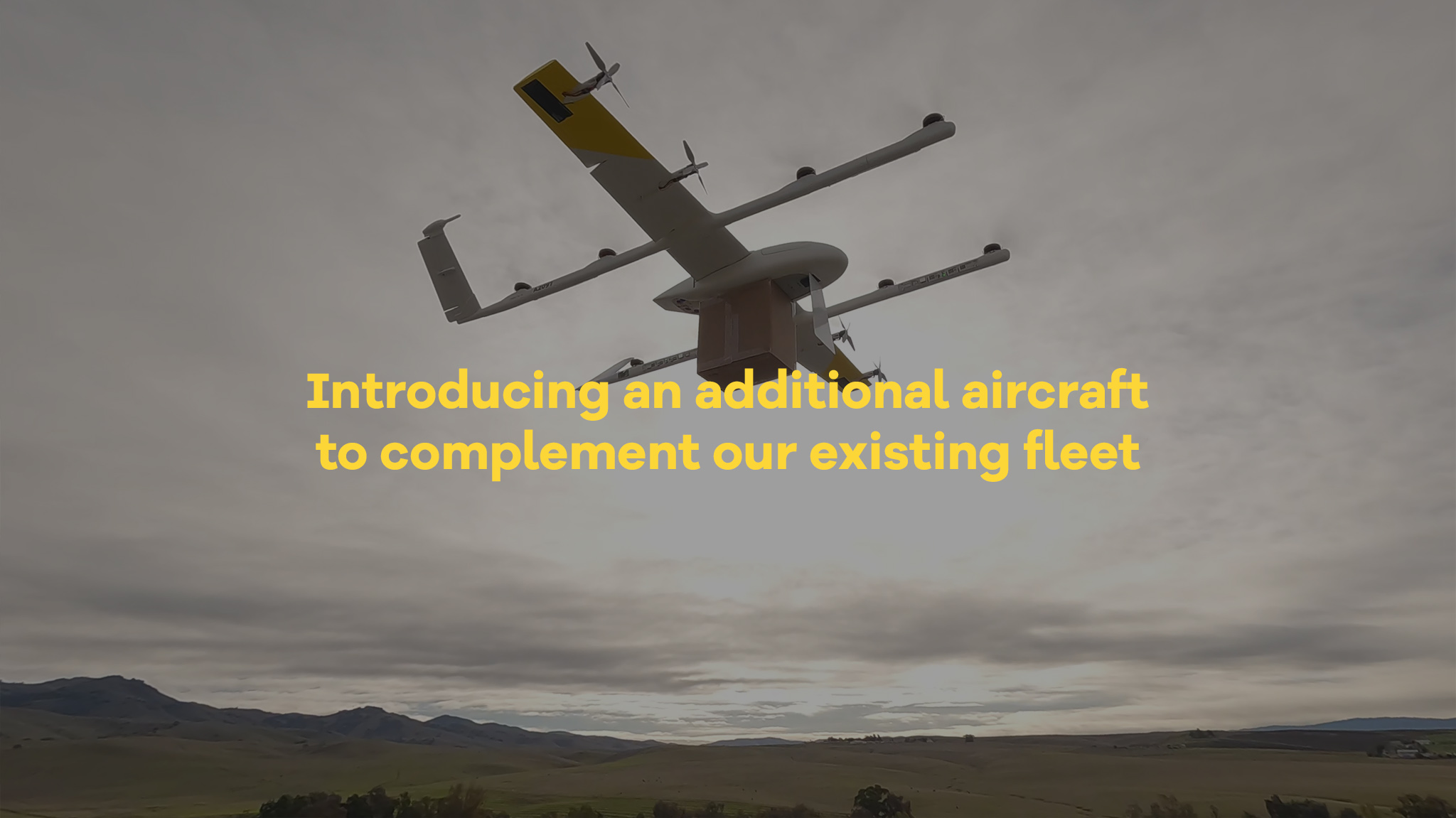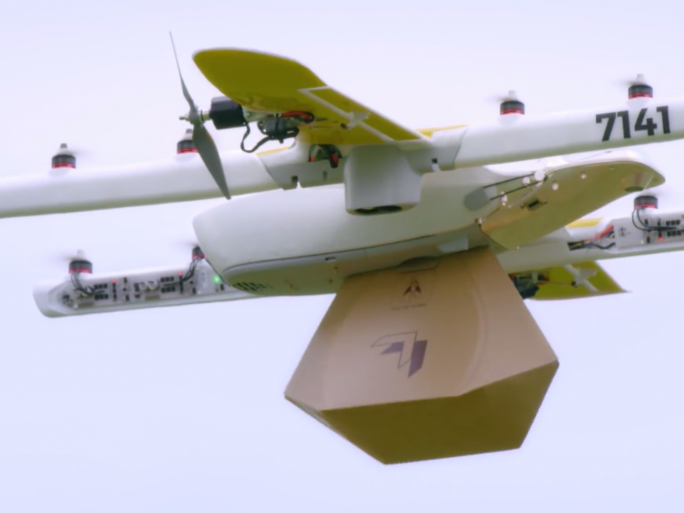Alphabet’s drone unit Wing confirms it has developed a larger drone capable of carrying heavier payloads, to satisfy customer demand with drone deliveries in the United States.
Drone announced the development in a blog post it is “thinking bigger” and is “introducing an additional aircraft into our fleet that will simplify and streamline larger orders.”
Wing, it should be remembered, began commercial drone deliveries in April 2022 in two locations, namely the suburban towns of Frisco and Little Elm, both of which are part of the Dallas-Fort Worth metro area.

Image credit Wing
Larger payloads
Until that time, Wing had been mostly delivering items in parts of Australia, and later Finland, and in smaller US towns, where land usage is less crowded and complex.
Wing’s drones typically deliver items such as takeaway food, coffee and medicines to various homes.
In September 2021 Wing had to temporarily pause its drone delivery service in Australia’s capital city of Canberra, after ‘territorial’ ravens were seen attacking the delivery drones.
But now Wing has said 350,000 Wing deliveries have now been completed to customers’ homes across three continents.
It existing drone could carry 2.5 pounds (1.1kg) in weight, but it recognised that some customers required larger or heavier goods to be delivered.
A video of the new drone can be found here.
“Today we offer the ability for customers to fulfill larger orders, beyond what fits on one aircraft,” blogged Wing. “Order trends tell us that 70 percent of all US orders are delivered by one Wing aircraft, while 30 percent are delivered by two. To better serve that 30 percent and further optimise our business, we will be introducing an additional aircraft to complement our existing fleet.”
“This new aircraft will streamline our deliveries of larger orders,” it said, “Just like other forms of transportation, drone delivery is not one-size-fits all. That’s why we’ve taken an approach to aircraft development that we call an Aircraft Library, where our team works on a variety of configurations and builds on core components we already use for our flight-proven aircraft.”
“By complementing Wing’s existing fleet of commercially operational aircraft, which carry about 2.5 pounds of payload, this additional aircraft will make it even easier for customers to get what they need, when they want it,” it said. “The new aircraft has the same round-trip range of 12 miles and can cruise approximately 65 miles per hour, all while carrying a standard cardboard delivery box with a payload up to five pounds.”
It said that the new aircraft can therefore carry “more food, medicine, and household essentials, customers in urban and suburban areas,” and allow for larger orders to be delivered “in one quick trip.”
Delivery future?
Drone usage has been touted for years as the future of good deliveries, but strict aviation rules (especially in the US), coupled with local concerns about noise and privacy, have dented the rollout pace of this technology.
Another factor is that many drones can only carry a payload of up to 3 kilograms, meaning that drone deliveries are unlikely to stop people’s having to visit their local supermarket for their weekly grocery food shop.
Amazon in previous years has been been a big champion of drone deliveries, with other firms such as Uber also exploring the technology.
But Amazon has seemingly cooled its enthusiasm for drone deliveries of late.
In late 2020 Amazon laid off dozens of R&D and manufacturing staff working on its delivery drone service Amazon Prime Air.




